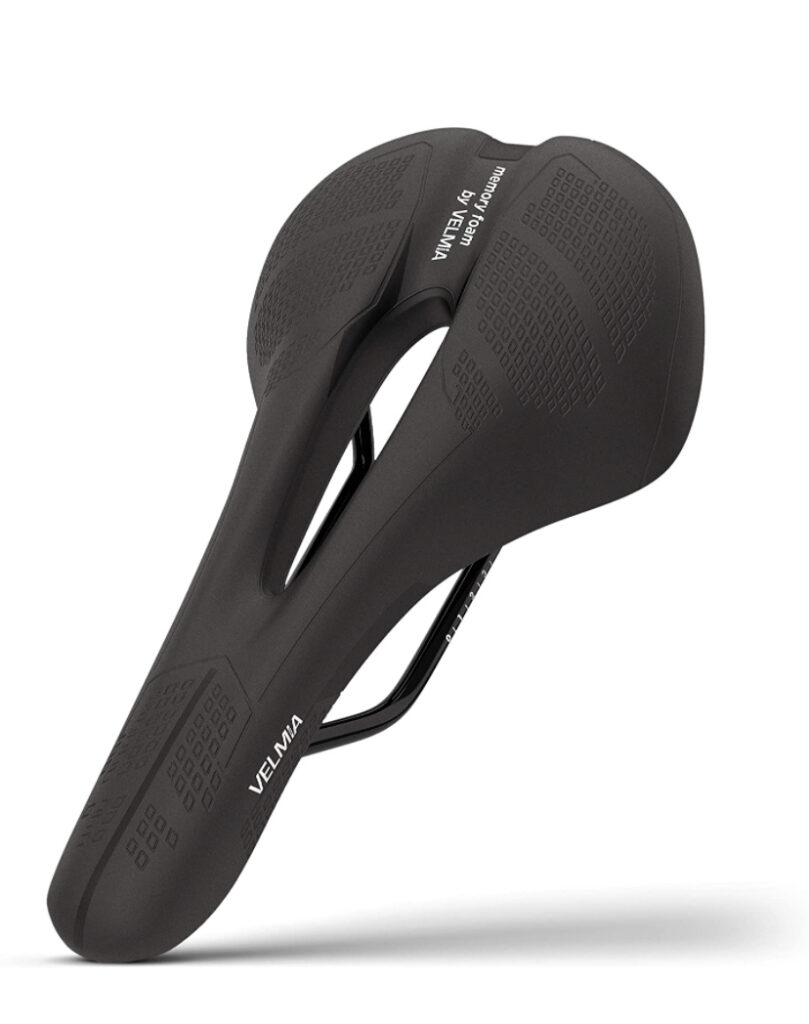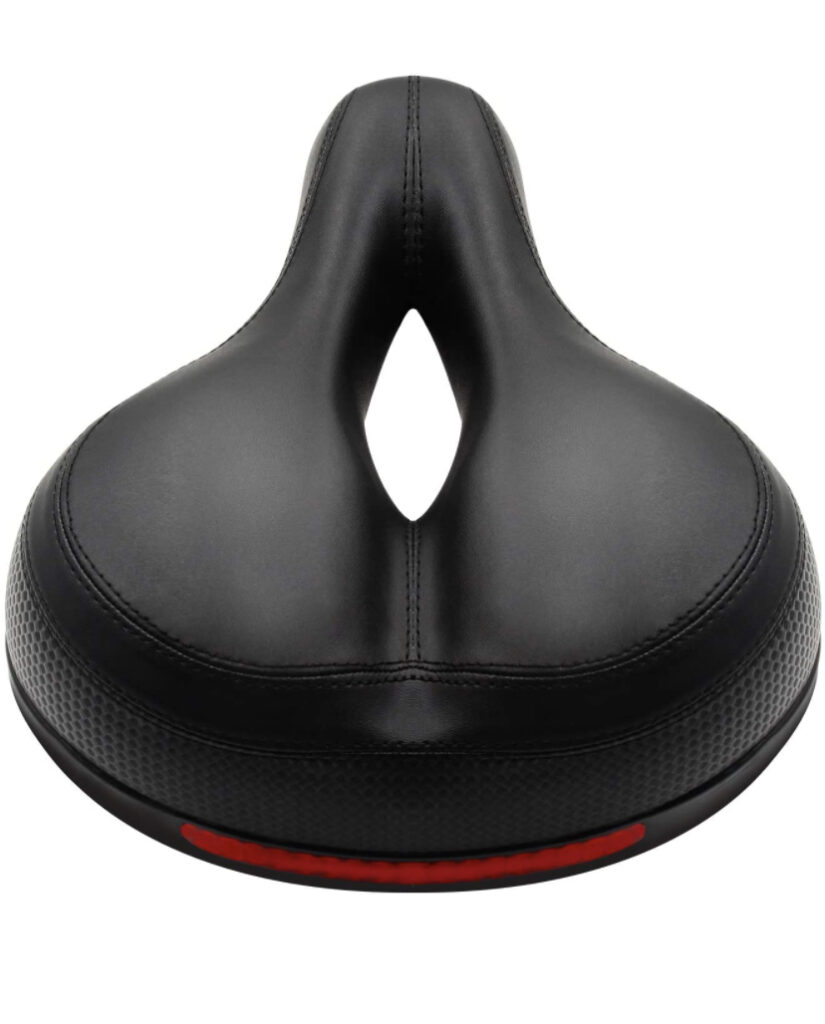Recently, bike seat on my stationary bike is a source of some aggravation for me. Why? Well, some parts of my bottom haven’t 100% recovered from the ironman and sitting on that saddle is uncomfortable. You can guess what that mean! Obviously, I did more research and I am sharing new lessons!
Lesson #1: it’s all very personal and there is a good reason for market being full of variety of bike seats. What works for one person won’t work for another.
Types of bike seats
There are two main types of bike seats based on overall shape:
Performance

You probably associate this type of bike seat with the ‘serious cyclists’ you see on the road and the trail. You know – guys in spandex, proper jersey and intense looks on their faces. It’s not really a coincidence, since this type of a saddle is specifically meant to be aerodynamic, allow for maximum power transfer and create minimum chafing.
Cushioning

Cushioning saddles, on the other hand, focus on comfort of people in a more upright position. The shape is meant to create low pressure for rider’s tailbone.
What type of riding are you planning on?
So now you know that there are two basic types of bike seats, but there are additional differences. So before you move on to figuring out the size, materials or the issue of the groove/ split in the middle, you need to figure out what type of biking you will be doing while using this bike seat. For more recreational riders, you will want to go in the direction of the cushioning seats, while performance bike seats are better when you lean forward all day. Your flexibility here actually plays a role. If you are more flexible, you will want a longer nose, as you will lean forward more when going into the aero position. On the other hand, when your hamstrings and back are tighter, you will lean back more and are more likely to shift your weight around, so you will want the seat to be more adaptable to that (and a wider one).
Size
Did you immediately think of the performance and cushioning seats when read about the size? I sure did! But that’s actually not what this refers to. When you are in the saddle, your touch points are your sit bones (what an imaginative name LOL). The true issue is how far apart they are when you are seated in the riding position, so bike seats have different widths to account for that. If your saddle is too wide or too narrow, it can put a lot more pressure on the sit bones or other spots in the area. And let’s not forget that it’s a rather sensitive area of the body. Which brings me to the next point:
Fit of the bike seat
So in addition to seats being wider or narrower, they can also have different lengths of the noses, become narrower earlier and a number of variations like that. One that most of you probably have noticed, but never gave much thought to is indentation or cutout in the middle. This is meant to keep pressure off your private parts. There is a couple of things to consider this. First: how much space do you need there. That’s definitely an individual decision and depends on your anatomy. Decision if you want just a groove or a full cutout will be influenced by the environment when you usually ride. If it’s hot and humid, you may want to opt out for a full cutout, so there is some airflow and you don’t overheat the area. On the other hand, if it’s frequently raining or you ride through mud, a full cutout could mean getting splashed by cold water and mud. Not awesome…
Types of cushioning
Gel
High tech! These are the comfiest ones and they mold themselves best to your body. But can you guess what their malleability means? Well, in the long run, they wear out faster. It may be worth it though.
Foam
Less likely to get compacted, foam will last longer. And this extends to both multiple rides and very long rides. So if you plan to spend all day in the saddle, foam is a better call. Additionally, foam is a better option for the heavier riders, as it won’t get squished as fast.
None
Not for everybody… But some people think that the way they break in over time gives them a better fit and makes them more comfortable. What about all the time while they are breaking in??? I went to high school with a competitive ice skater and her stories of breaking in new skates didn’t sound fun. I doubt that bike seats are any better. On the other hand, it might work. Oh, and since they don’t put a thick layer of stuff touching your skin, you will stay cooler. So that’s a plus.
Time to choose the perfect bike seat!
So now that you know what you get to choose from, you need to make your own decision regarding a perfect bike seat. I found these 5 tips to be immensely helpful – bullet point summary of this article! And yes, don’t forget #4 and #5 – correct height and angle. Because no matter how much effort you put in selecting a seat, it will be uncomfortable if it’s not position correctly under you.
So get out there and go for a ride. See you on the trails!
